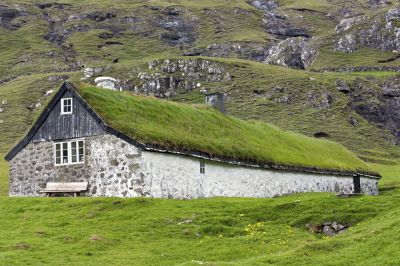













































Green roofs and terraces with natural rainwater treatment system are proposed to implement in the Polish construction industry by Jolanta Majcher–Łoś, PhD student at the University of Agriculture in Kraków. Not only grass can grow on green roofs, but also shrubs and even small trees.
This technology is not common in Poland, but it is being developed in Western Europe, due to the beneficial effects of green to the urban microclimate. Polish researcher sees in it new opportunities associated with the cleaning and the use of rainwater.
Jolanta Majcher-Łoś, author of the BioArtTech project, is the third place winner of the second edition of "Małopolska Ingenuity Incubator", organized by the Marshal Office of Małopolska Region. Its purpose is to selecting promising business plans prepared by Małopolska doctoral students.
"My idea combines the environmental, economic and technical benefits of green roof technology with the possibility of sourcing, storage and treatment of rainwater. System of natural water filters and absorbents would allow to use it for utility and drinking" - explained PhD student from the Institute of Plant Production, Grassland Department at the Faculty of Agriculture and Economics, University of Agriculture in Kraków.
The focus of the researcher’s scientific work is biology of grass, and her doctoral thesis is the base, not the core of the project. In her business idea, Jolanta Majcher-Łoś decided to find practical applications for knowledge of the practice grassy she gained at the university. She would like to work on the project after graduation.
"In Poland, green roofs are not yet widely known, in contrast to Western Europe, where 10-15 percent roofs are covered by greenery. Countries such as in countries such as Germany, the Netherlands and France appreciate both innovative approach to the exterior of buildings and environmental considerations. These spaces are biologically active, which is much needed in the cities. In Poland, this technology is in its infancy" - believes Jolanta Majcher-Łoś.
In her research she tries to identify plants that can be successfully grown on roofs. Roofs do not offer optimum conditions for plant growth, so it is important to select appropriate species that will adapt to harsh conditions: strong sunlight and high temperature. Plants that grow on such roofs are mainly grass, sedum, sclerophytes. Another task of the researcher is to choose a suitable substrate.
"Substrate depends on the bearing capacity of the roof. On a very strong roof, we can put a thicker layer of the substrate, which can sustain even small shrubs and trees. With less roof strength, and if you want to have vegetation that requires minimum care, a thin layer of the substrate (a few-dozen cm) will suffice. Vegetation is best planted on flat roofs or roofs with a drop up to 15 degrees. In the case of steeper roofs, soil must also protected from subsiding during heavy rains and strong winds" - explained the PhD student.
She added that it is best to take bearing capacity of the roof into account at the design stage of the building, but it is possible to adapt this technology to existing buildings on the basis of expert opinions. Green roof is an additional burden, especially in winter, when it snows, or during heavy rains, when soil becomes saturated with rainwater. That's why analyses always need to be taken into account.
"Green roof technology is already well-known in the world, but combining it with a natural water treatment is an innovation. It turns out that green filters can be used for rain water recovery. Roofs covered with vegetation hold very much water. Most of it evaporates into the atmosphere, thus advantageously affecting the urban microclimate. So-called retention roofs that use special membranes retain even more water, which can be easily accumulates"- said Jolanta Majcher-Łoś.
Her project involves using natural, mineral filters or organic absorbents based on modified cellulose. For this purpose, she has teamed up with the owner of Kraków company involved in environmental cleanup, water and waste water treatment, whom she met diring the last year's Małopolska Innovation Fair.
Water recovered from retention green roofs could be used not only for utilities, but also as drinking water. The researcher emphasised that rainwater ahs very good properties, but especially in the cities it is not suitable for drinking. But there is a technology that allows to clean this water.
The PhD student plans to open her own business and cooperate with a company that makes filters. She assures that she is a scientist by vocation, and she intends to continue research work, therefore she wants to achieve independence.
Source: PAP - Science and Scholarship in Poland, Karolina Olszewska